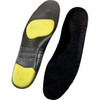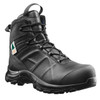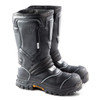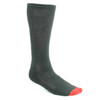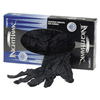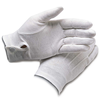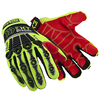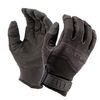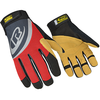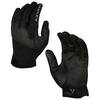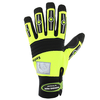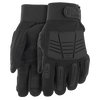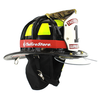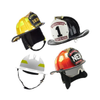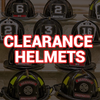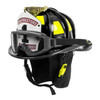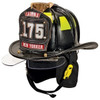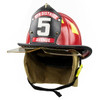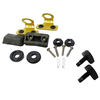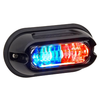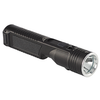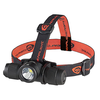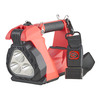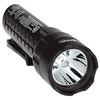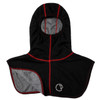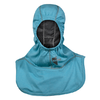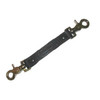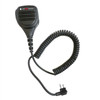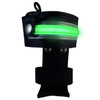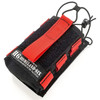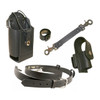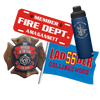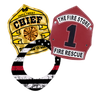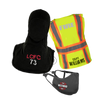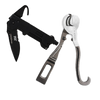TODAY’S FIREFIGHTER NEEDS A PURPOSE-BUILT HELMET
Posted by Robert Avsec on Mar 25th 2024
By Robert Avsec for FireRescueOne BrandFocus
Do you know the origins of your current firefighter helmet? Perhaps not, so here's a quick look at where the traditional fire helmet and all its modern versions came from.
The helmet was originally developed to protect the firefighter’s head from objects or debris falling from above.
What about the eagle on the headpiece which holds your company or department shield in place? Sure, it’s got ornamental appeal, but it was also useful as a forcible entry tool for breaking windows.The wide rear bill of the helmet was designed to prevent hot water and hot embers from reaching the firefighter’s neck or falling down the inside their coat. (Our firefighting forefathers could not have foreseen the conflict between that rear bill and an SCBA cylinder every time you try to look up!)
Everything since then has been an add-on of some sort: flashlights of all sizes and designs; Bourke eye shields, full face shields and goggles (which then needed their own add-on: a case to protect them from heat and debris damage).
WHAT HELMET WOULD YOU DESIGN?
What if you were designing a helmet for all the jobs that you do today? For structural firefighting, auto extrication, wildland fires and all those other emergency responses you and your department make, you probably would want a helmet that:
- - Provides 360-degree protection for your head from physical hazards and a degree of hearing protection from the noise pollutions present on emergency scenes.
- - Is not constantly getting in the way, like when you're working in tight quarters or when you try looking up and the brim smacks your SCBA cylinder. How many times have you taken off your helmet during an op because it was bugging you? Be honest!
- - Incorporates all the tried and true add-ons (such as eye and face protection and lighting) into a streamlined helmet.
- - Gives you better communications with built-in speakers and a microphone that works with or without your SCBA facepiece (because you always have your helmet on, but you're not always wearing your SCBA, right?).
- - Can easily be taken apart and completely cleaned and decontaminated following interior structural firefighting to reduce the risk of toxic chemicals and carcinogens remaining in the helmet or the suspension system.
- - Fits comfortably so that pressure points don’t develop, even after an extended period of wear.
Sound about right?
MSA DESIGNED A HELMET WITH YOUR SPECS
In its Cairns XF1 fire helmet, MSA Safety has designed a helmet that incorporates all those wish-list items. Here are the features MSA has put into the MSA Cairns XF1 fire helmet:
- - A compact light accessory that is housed inside of the helmet, reducing exposure to heat, flames and impact. Its unique side placement (on either side of the helmet) rather than at the top of the helmet improves visibility without detracting from others' vision and eliminates one of those annoying snag potentials.
- - An integrated face shield that provides gap-free, full-face protection when you need it and hidden retraction when you don't. The face shield gives a firefighter an unimpeded, wide field of vision in all directions and is designed to fit most face shapes, even for those firefighters wearing corrective lenses.
- - A second pull-down option – the ocular visor – for when you still need eye protection, but not necessarily full-face coverage. The visor is ANSI/ISEA-compliant eye protection and articulates forward and backward to optimize fit across a wide range of facial profiles, with or without corrective lenses.
- - An easy-to-clean modular design that enables a firefighter to quickly disassemble the XF1 for thorough inspection, care and maintenance. All the helmet’s soft goods are removable, washable, and replaceable without the use of tools. MSA has engineered all these features so that firefighters using the XF1 are aligned with the cancer prevention directives from the Firefighter Cancer Support Network.
Quarterbacks in the National Football League have radio receivers in their helmet so that they can receive plays and directions from their coaches during a game in front of 75,000 or so screaming fans. If it makes sense for the NFL, why shouldn’t it for firefighters on an emergency scene?
The Cairns XF1 fire helmet also contains a communications module that easily fits inside the helmet and doesn’t affect wearer comfort. The speakers are located near ear to create a more conducive environment for hearing critical radio communications. The flexible, noise-cancelling electric boom microphone can be used with or without your face piece and doesn’t require batteries.
Just about every aspect of the XF1 has been engineered to reduce potential snags – lighting, eye and face protection and communications are all contained inside the helmet or integrated into its design. The result is sleek and seamless design that meets the safety and comfort requirements of today’s firefighters.
The MSA Cairns XF1 may not be the helmet that your great-grandfather would have designed for you, but then again, your great-grandfather wasn’t the firefighter that you are, was he?


